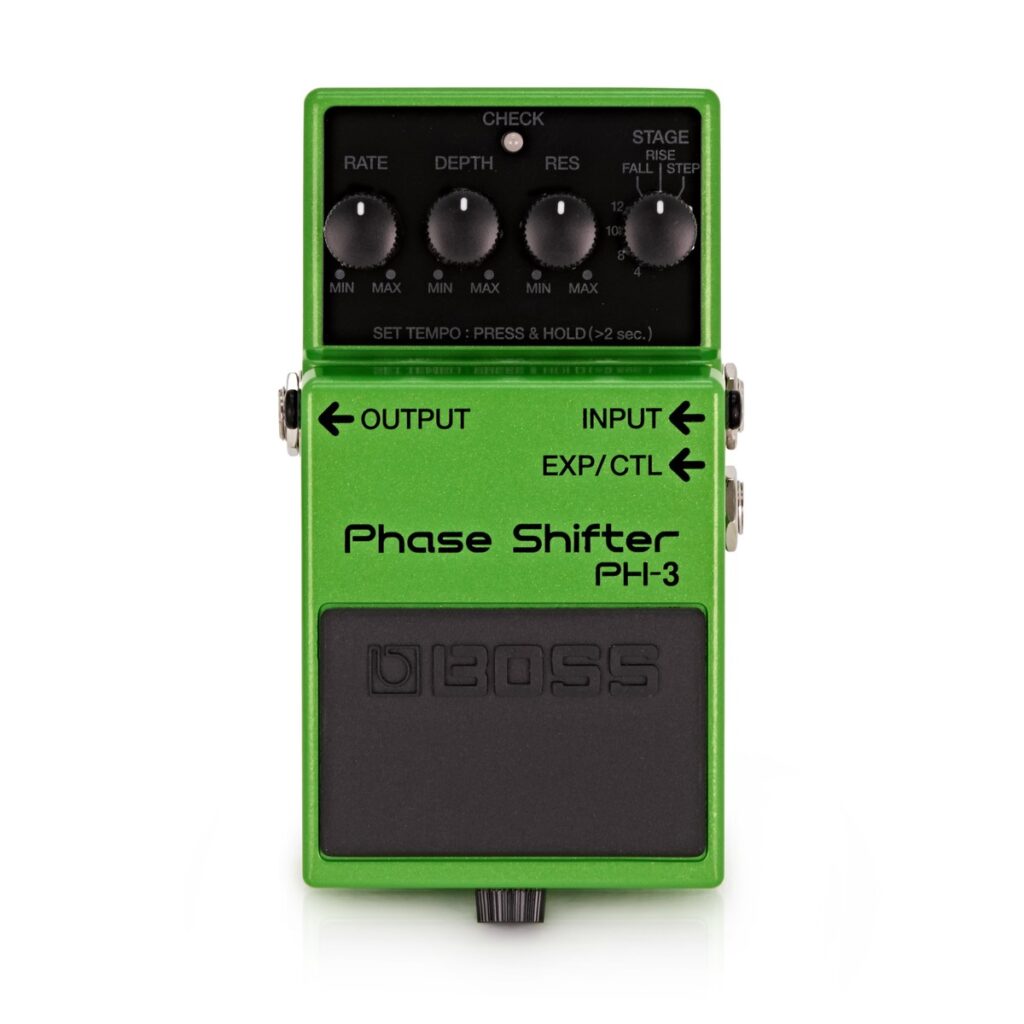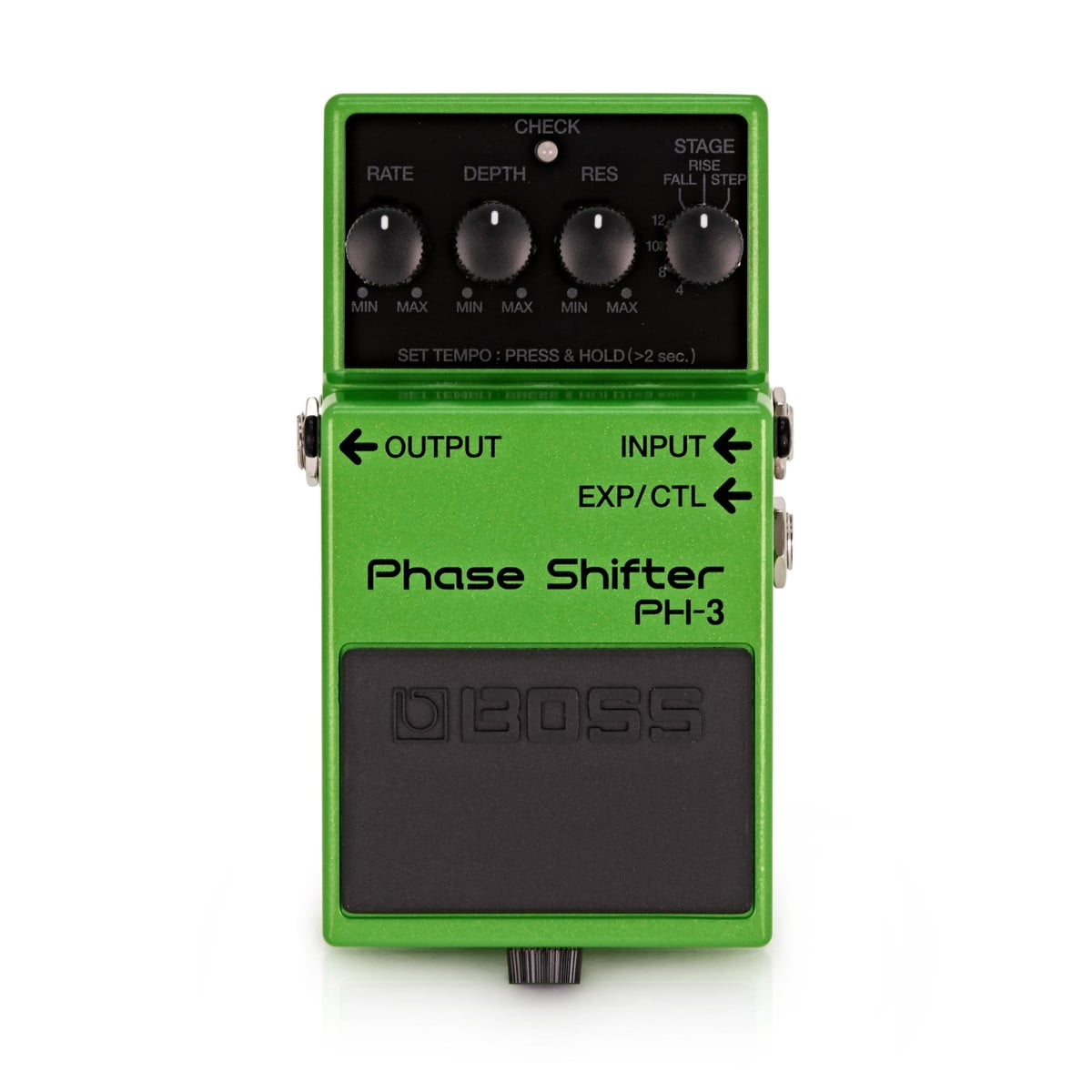
A phaser is a modulation guitar effect that creates a distinctive swirling or sweeping sound by altering the phase of the guitar signal. It works by splitting the guitar signal, modulating one part of it, and then blending it back together. This modulation results in peaks and troughs in the audio signal’s frequency spectrum, producing the classic “whooshing” or “swooshing” effect associated with phasers.
Functionality of a Phaser Effect
Phase Shifting:
Phaser pedals split the guitar signal into two paths, one of which is shifted out of phase. The altered signal’s phase is then modulated, creating peaks and notches in the frequency spectrum when combined with the original signal.
Sweeping Effect:
By altering the phase relationship between these two signals, phasers generate a sweeping, swirling effect that moves up and down the frequency range. This effect can be subtle or pronounced, depending on the pedal’s settings.
Songs Utilizing Phaser Effects
“Eruption” by Van Halen:
The intro guitar solo in this iconic song prominently features a phaser effect, showcasing its ability to add depth and texture to guitar solos.
“Shine On You Crazy Diamond” by Pink Floyd:
David Gilmour’s guitar work in this song utilizes a phaser to create atmospheric and psychedelic textures, contributing to the song’s ethereal quality.
“Ain’t Talkin’ ‘Bout Love” by Van Halen:
Another Van Halen track where a phaser is used, showcasing its application in crafting a unique guitar tone for the song’s riff.
“Barracuda” by Heart:
The guitar intro in “Barracuda” employs a phaser effect, contributing to the song’s distinctive sound and adding movement to the guitar riff.
“Come As You Are” by Nirvana:
The guitar riff in this song by Nirvana features a subtle use of a phaser, creating a haunting and atmospheric vibe.
Using a Phaser Effect
Dialing in Settings:
Most phaser pedals offer controls for speed (rate of modulation), depth (intensity of the effect), and sometimes feedback or resonance. Adjusting these knobs allows users to shape the character and intensity of the swirling effect.
Placing in the Signal Chain:
Phaser effects typically come after distortions/overdrives but before time-based effects like delay or reverb. This positioning helps maintain clarity and prevents the phaser from altering the echoes or reverberations of the signal.
Experimentation:
Like many guitar effects, using a phaser involves experimentation. Finding the right balance of settings and exploring different speeds and depths allows guitarists to achieve the desired swirling effect that suits their playing style and the mood of the music.
Conclusion
A phaser guitar effect adds depth, movement, and a unique character to guitar tones. Its ability to create a swirling, sweeping sound has been utilized across various musical genres, from classic rock to psychedelic and ambient music. By manipulating the phase relationship of the guitar signal, a phaser pedal offers a versatile tool for guitarists to add texture and dynamics to their playing, contributing to the creation of distinctive and memorable sounds.

